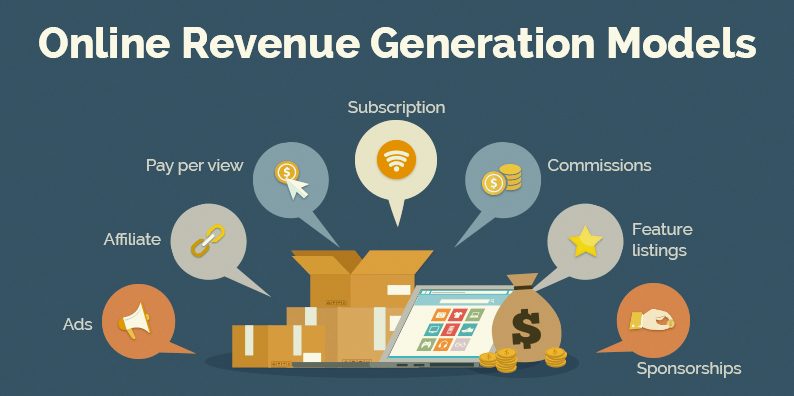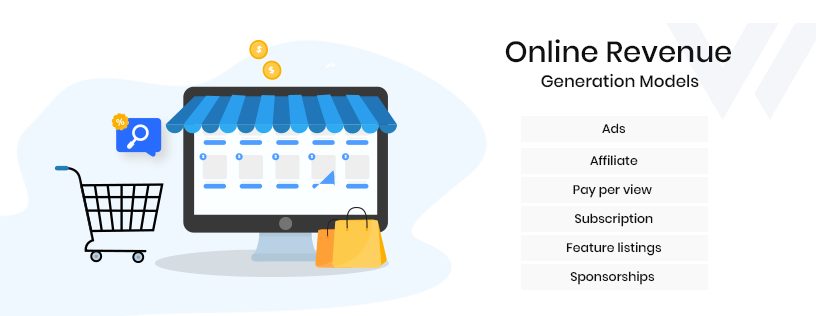How much do online marketplaces are making tons of profit with their revenue models?
No one has an exact point to nail out the startups that do not have an accurate profit source. Meanwhile, the top online eCommerce marketplaces are booming to the next level and are on a mission in making a handsome profit out of their online marketplaces business model.
This is the prime reason why main entrepreneurs are showing up their interest in creating a multi-vendor marketplace website that is unique and good at selling in the eCommerce market.
Build your Amazon-like multi-vendor marketplace website @ $249/- now!!!
Get your free live demo now: Click here
Between the aspirations, many are still confused about how the popular online marketplaces are making revenues?
To put that confusion away from you, we’d like to bring a piece of content to improve your understanding of revenue-making strategies and tactics that work.
Okay then, what is an online marketplace website are all about?
Marketplaces concepts are not something that born yesterday and growing exponentially today. It is the idea that dates back 3,000BC when marketplaces are simply a place where many sellers across various boundaries come together and buyers to barter and sell goods.
Fast-forwarding today, the internet has changed everything, including the way marketplaces works, and given a new name called Online marketplaces.
Today’s eCommerce marketplace is a website or app that seamlessly connects vendors and buyers. Online marketplaces like eBay, Craigslist, Angie’s List are ruling the internet from their inception in 1995.
Key takeaways from this blog piece:
- Over $3.45 trillion spent globally on the top 100 online marketplaces in 2021
- Gross merchandise sales grew 27% last year
- 69 marketplaces are based in the U.S., and they grew sales 31% in 2021
Ways the online marketplaces generate profit with no time

Have you ever had the thought of building your marketplace?
You would wonder how to make revenue from it and how these online marketplaces gain profits in the business environment?
The answer is simple – all they use is the right business model, perfect revenue stream, and niche aligned with their mission, vision, and best-fit plan.
Many eCommerce startups and companies can pick one business and revenue model that will perfectly suit their needs to join the success journey.
“Flexible online marketplace revenue model= Great way to generate profit”
Without decent profit, no business can sustain and evolve into an established one, so as the online marketplace business. Hence, to pick the right model, we’ve listed below are five revenue-making models of how big players of online marketplaces generate profits:
Lead by reimagining your eCommerce marketplace potential with Webnexs, get your free consultation today!!!
Membership fee – Best known way to make profit from online marketplaces
In the membership model, each vendor or customer pays a membership fee to list, sell and make a profit on the online marketplace platform. This model ensures and sets up a constant amount of revenue monthly with seamless transactions.
Examples:
Some good examples of membership fee are dating and matrimonial websites.
Along with them, housing exchange websites are a great example, where members can freely interact with people on a monthly subscription basis.
Listing fee
The model name implies that vendors or merchants pay fees for listing their goods and services on your online marketplace platform. The online marketplace charges a fee to make an advertisement on its platform.
The listing fee may be a flat-rate amount or a percentage of a good or service value or even based on the number of listing merchants made on the online marketplaces.
Compared with the membership fee, listing fees are best when providers don’t want a continuous subscription and only want to sell certain items. But the only challenging thing about the listing fee model is that it doesn’t guarantee providers’ value.
Freemium
The freemium model’s core idea is for the offering is free, but after the user used it for many periods and got hooked by your offer, you’ll be offering them paid value-added features.
You can use the service’s essential features, but the advanced features are available only for the VIP-tokened clients who pay the premium. Hence, once if the customer is hooked enough, they’ll transfer to the paid versions. Many OTT platforms use this model, like Disney +hotstar. The freemium model’s advantage is that it is much easier to attract an audience to a free marketplace.
Also, users are more willing to pay for additional services if they can first evaluate the introductory offer’s capabilities. However, to convince those online consumers, it is better to give the advantage of paid features. If only 1% of all users are interested in a premium offer, and the rest use the site for free, the model will not work effectively.
Customer contact fee
Both customer contact and lead fees are common kinds of commission models in the online marketplace. The lead fee commission model earns and gives you a better value proposition when comparing to other commission models. Here the site owner gets paid only if the users put themselves in touch with customer contact.
Unlike other models, this customer contact fee model doesn’t pay you a successful deal. But in terms of ad placements, this model reaps better and can get festive at the higher grades.
Example:
Any B2C eCommerce marketplace comes under a contact fee model that provides local professional services like plumbers, painters, and guitar artists.
Commission fee – Profit making model for online marketplaces
A commission fee is the most common type of commission model, and it gained popularity among business owners as it serving many Online eCommerce marketplaces like Amazon, Etsy, and AliExpress. With the commission fee model, marketplace owners earn a commission for every transaction made on the online market.
It is the ideal model to earn a guaranteed revenue from each transaction, building trust between the vendors and sellers.
But how do they earn trust?
Just by serving successful transactions over the platform.
Not being charged with anything other than getting some value in the marketplace is the commission model’s most significant benefit.
Example:
Popular online marketplaces: Airbnb, Etsy, and eBay, Uber are using the commission-based model as their primary business model.
So felt good with any above business models?
Guess what, as if we know, the commission model is the best revenue model to make constant revenue into your hands while other models take you to a little longer road to success.
Okay, then what would be the advantages of a commission-based revenue model?
Advantages of commission revenue model:
As a matter of earning is essential, marketplace owners get a commission for any purchases made on the marketplace platform. In the commission model, sellers don’t have to pay any additional cost for the product they don’t buy.
The commission revenue model is the big-margin winner in earning the trust of the sellers.
Are you looking for a correctly drafted commission model-based online marketplace platform?
Get your online marketplace platform to be the best among the top online marketplaces that help to expand your eCommerce business reach and make a handsome profit from the online marketplace today.




